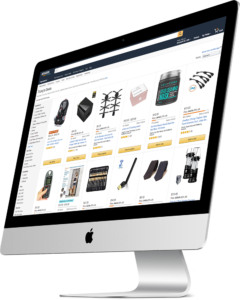
Portals like Amazon help retailers by allowing them to establish an online presence through a reputable platform. However, the nature of third-party selling has also made it easy for unscrupulous merchants to profit off of the hard work and good names of others. Even huge corporations have had major issues with unauthorized product sales. If they have trouble stopping these practices – even with their deep pockets – what’s a smaller eMerchant to do for protection?
Identifying the Source
Due to the sheer volume of online retailers, learning who’s selling your merchandise and where they get their product can be difficult. There are five types of re-sellers, some of who are innocuous and easy to stop. Others are unscrupulous and adept at sidestepping rules and legal regulations. The most common sources of unauthorized sales are:
1. Authorized Distributors
The main source for unauthorized product distribution. They buy from the manufacturer at wholesale and sell their surplus stock later at a discount. Often, they’re unaware of violations from third-party sellers, but not always.
2. Professional Resellers
Pros are the main buyers of excess stock from authorized vendors. The intention isn’t really to rip people off, but they hurt retailers by selling at a lower cost or offering perks and services that authorized vendors can’t.
3. One-Time Resellers
One-off sales are the most innocent, least problematic, and easiest to stop. Usually, they’re just people who bought something, didn’t like it, and decided to try and re-sell it online.
4. Professional Scam Artists
This group is similar to professional re-sellers, but they employ unethical practices to gain stock and sales. Most of the time, they use loopholes to gain access to products from authorized merchants and circumvent Exclusivity and MAP agreements.
5. Thieves
Most of this group is comprised of people who use stolen information to make bulk purchases of items for re-sale. Since they aren’t actually paying themselves, it’s pure profit.
Your Legal Options
Once you’ve identified the unauthorized seller and/or their source, there are several legal means that you can use to stop them. The first step would be to issue a ‘Cease and Desist’ order. This will usually stop non-criminal sellers immediately. Other options include:
• Filing suit for trademark violation
• Filing a claim in court
• Appealing to Amazon to remove them
Preventing Theft and Fraud
Unfortunately, much financial damage is done by the time you find the source and exercise your legal options; Amazon itself has done very little to curb third-party sales. Since the main source of inventory for the biggest scammers is your authorized distributors, this is the best place to start. Many are unaware of how the product is being re-sold. Simply making them aware of the practice will stop the honest ones. However, there are some dealers who are perfectly aware and are an active part of the chain of fraud. If your dealer continues to supply scammers or professional re-sellers, the only option is to terminate their authorization.
The Brandlox Difference
Whatever type of re-seller you’re dealing with, identifying the culprits in a timely manner is the key to stopping them. The problem with many of the available solutions is that they may be too little, too late. However, Brandlox has a way to locate unauthorized sellers before they can do a lot of damage. They’ve developed proprietary software that works with your product’s unique ASIN and sends an alert whenever a product bearing it appears for sale on Amazon, saving you time and profit.
Brandlox is a cost-effective way to protect your brand, and you can access it for as little as $29.99 per month. Don’t hesitate to contact us today to learn more and start your 10-day free trial. You can also call us toll-free at 866-882-8484.
